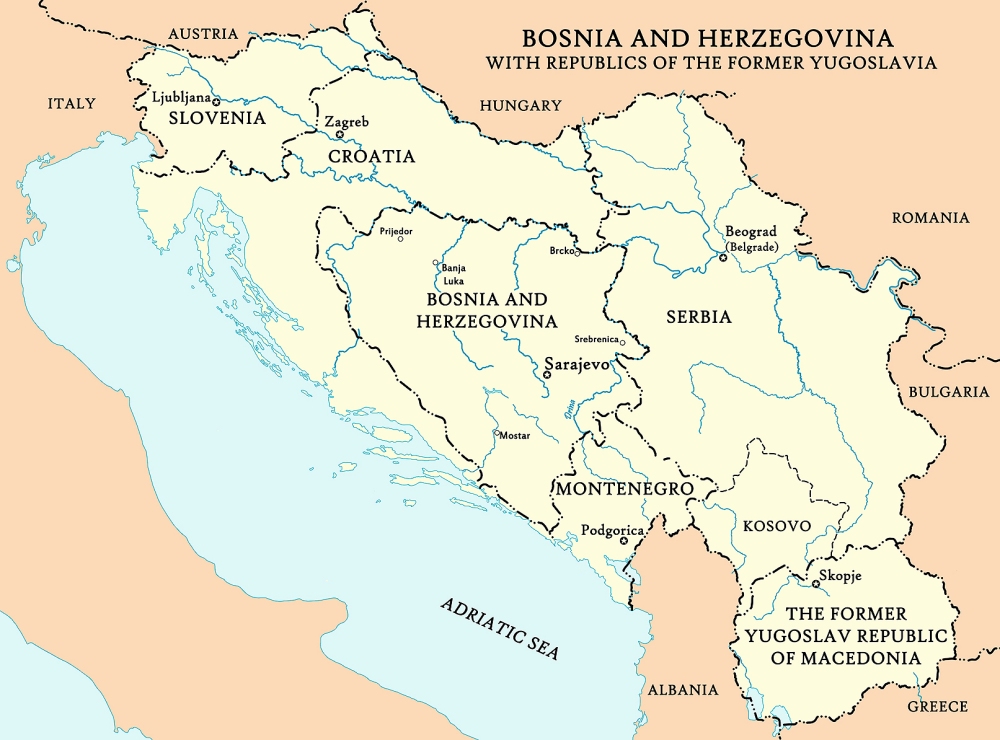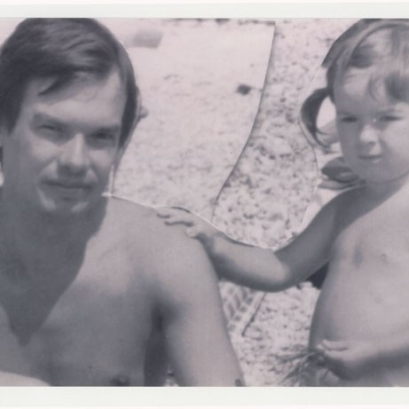Conflict in the Balkans – A Brief History
The Eastern European nation of Bosnia and Herzegovina, commonly referred to as simply ‘Bosnia,’ has a long and complex history, with settlements beginning as early as the Stone Age. Bosnia has long been at the meeting point of Eastern and Western cultures, from the 15th century when the Ottoman Empire expanded westward to the Balkans, into the 18th century when the Austro-Hungarian Empire vied for control from the west, and through the two World Wars that saw the establishment of Yugoslavia in the last century. As part of Yugoslavia, Bosnia came under the rule of Joseph Broz Tito following World War II. Under Tito, Yugoslavia was a nation-state that suppressed cultural and religious differences through a policy of nationalistic communism referred to as “Brotherhood and Unity.” This period was also marked by economic prosperity and multi-ethnic cohesion, which began to disintegrate following Tito’s death in 1980.
As nations of the former Yugoslavia began their struggles for independence in the 1980s, following the death of Tito and the breakdown of communism in other countries in Europe, Serbia used military strength to expand their power in the Balkan region. When primarily Roman Catholic Croats and largely Muslim Bosniaks joined to declare Bosnia’s independence in 1992, Serbs, who are mainly Eastern Orthodox Christian, responded with war and subsequent ethnic cleansing. During the early 1990s, the eyes of the international community were drawn to the war by the Siege of Sarajevo (1992-1995) and the genocide of over 8,000 Bosniak men and boys in Srebrenica in July of 1995. Though they received less international attention, other crimes against humanity were also committed, including torture of Bosniaks in concentration camps in and around Prijedor, systematic rape of Bosniak women, and ethnic cleansing in other parts of the country. The war drew to a close as a result of the Dayton Accords of 1995, but many of the underlying tensions in the region continue today. Those who fled the war, including our Bosnian neighbors in Bowling Green, carry their memories with them.

Ethnic Cleansing in Bosnia
The two maps below reflect census data recorded in 1991 and 2013, the most recent data gathered before and after the war in the 1990s. It should be noted that in the 1991 survey, the term “Bosniak” was recorded as “Muslims,” but changed to “Bosniaks” for the 2013 survey (the different shades of green reflect this change). The 2013 census data, the subject of dispute between Bosniak and Bosnian Serb controlled political parties, reveals the long-term effects of ethnic cleansing in Bosnia.
Click on small maps to enlarge
Memories Carried from Bosnia to Bowling Green
Click the names to below to hear the stories of three individuals/families who fled Bosnia as refugees before eventually finding home in Bowling Green, Kentucky:
◉ Sadeta Hodžić’s Story
◉ Dijana Muminović’s Story
◉ The Dželil Family’s Story
Dig Deeper: Bosnia 101
On August 29, 2017, WKU professor Jerry Daday, Ph.D provided an overview of Bosnia and Herzegovina’s complex history as part of WKU’s International Year of Bosnia and Herzegovina. This introductory 101 event provides an excellent overview of the history of Bosnia and Herzegovina, including the country’s long, rich history through to today. Watch the presentation here, provided by WKU International Programs.
Dr. Daday is Executive Director of the WKU Center for Innovative Teaching & Leading, and leader of the 2017 WKU Zuheir Sofia Endowed International Faculty Seminar in Bosnia and Herzegovina.
To view timelines that mark important events surrounding the war, click the links below:
http://www.bbc.com/news/world-europe-17212376
http://www.balkaninsight.com/en/article/timeline-war-in-bosnia





